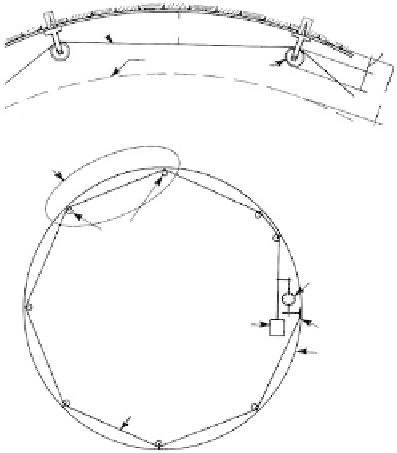Environmental Engineering Reference
In-Depth Information
c
Wire
a
Roller
Protection
box
Reference
pin
Det A
Det A
Long arm
with tilt
sensor
Short arm
with tilt
sensor
Rollers
Dial gage
Weight
Fixed end
Tunnel wall
Steel wire
(a)
(b)
FIGURE 4.11
Monitoring tunnel wall movements (a) Stringing an Invar wire through a series of rollers attached to pins
around the tunnel wall leaves the tunnel unobstructed for construction activity. (From Silvera, J.F.A.,
Proceedings of the 1st Congress
, Brasileira de Geologia de Engenharia, Rio de Janeiro, August, Vol. 1, 1976,
pp. 131-154. With permission.) (b) The Bassett system uses tilt sensors to monitor changes in the position of
reference pins. A data-logger automatically records tilt readings. (Courtesy of Slope Indicator Co.)
Principles
Frequency and amplitude are the basic elements of the waveform of harmonic motion
from which acceleration, force, particle velocity, and kinetic energy can be determined.
Acceleration or displacement, when combined with the measured frequency, can be used
to control or measure vibration damage by providing a measure of the energy transmitted
by the vibration source. Some instruments directly measure the peak particle velocity.
The energy transmitted is directly proportional to the square of the peak velocity (see
Section 11.4.2).
Ground motion
is the result of the induced vibrations. A scale of vibration damage to
structures and the limits of human perception in terms of amplitude and frequency is
given in
Figure 4.12.
4.3
Subsurface Deformations
4.3.1
Forms and Significance
Vertical Displacements
Compression or consolidation of strata under applied stress results in surface settlements
as described in
Section 4.2.
In some cases, it is important to determine which strata are con-
tributing most significantly to the vertical displacements.




